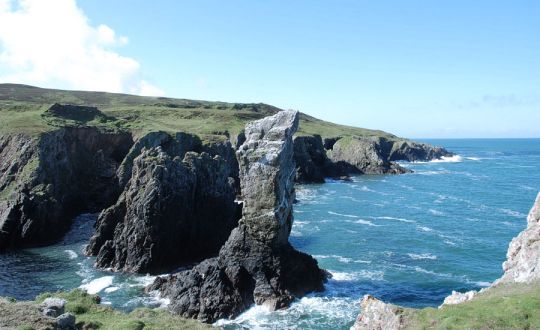Islay facts

Much of Islay is low-lying and fertile. However, it also has high moorland and hills, the highest of which is Beinn Bheigeir at 491 m.
The variety in the Islay landscape is due to its underlying geological structure. Hard quartzites form the rugged uplands, while the lower lying, more fertile land is underlain by limestone and mica schists.
There are extensive raised beach deposits within the bays and substantial areas of blown sand both on the coast edge and extending into the hinterland. You’ll discover numerous fresh water lochs in the hinterland and abundant streams, some of which form falls on the higher parts of the coast edge.
Natural environments
The varied geology of Islay supports a range of natural environments, ranging from heather moorland, peat bogs, wetlands and salt marsh to deciduous and coniferous woodlands, rich grassland and scrub forest. Islay has a relatively mild climate; it’s warmed by the Gulf Stream and largely sheltered from the open waters of the Atlantic Ocean.
Economy and land use
Agriculture forms the largest single economic activity on Islay; the whisky industry, fishing and tourism are other important sources of income. Much of the farmed land is used as grazing for cattle and sheep although some arable cultivation is also carried out. Large tracts of the higher moorland and hill land are incorporated into deer shooting estates. Several of the peat bogs are regularly cut, providing fuel both for the nine distilleries and for private use. There are coniferous tree plantations, concentrated mainly to the south east and eastern parts of the island. The area around Loch Gruinart is a designated nature reserve managed by RSPB.
Population
At the last census of 2011 Islay had 3,228 inhabitants in 1,479 households spread over 62,017 hectares, giving a population density of 0.06 people per hectare. The population declined by 2.3% 1991-2001 and by 7% 2001-2011.
Other interesting facts
- The island's capital Bowmore is home to almost 1,000 inhabitants. Other major villages are Port Ellen, Port Charlotte and Portnahaven
- The world's first commercial wave-powered electrical generation station was built in 2000 near Portnahaven
- Lord George Robertson, former NATO Secretary General, was born in Port Ellen